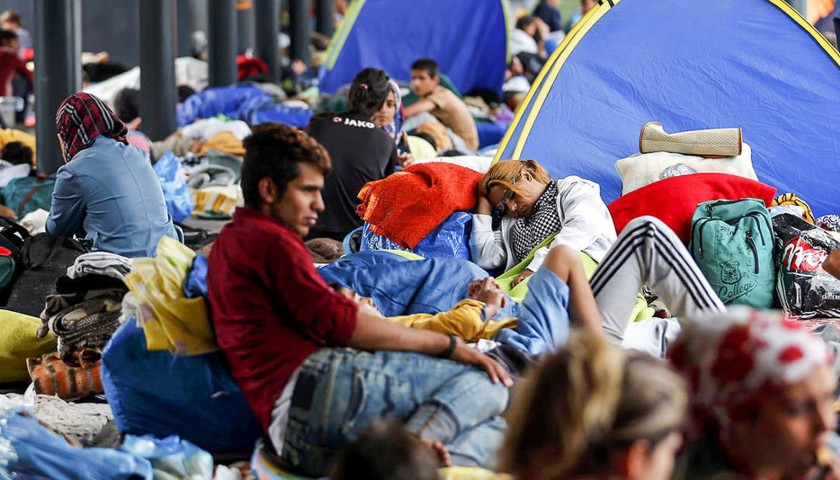by Victoria Macchi
The Trump administration is considering more dramatic cuts to the U.S. refugee program, with one official suggesting the White House not allow any refugees into the country in the coming fiscal year.
In a Politico report released Thursday, government officials from several federal agencies attended a meeting last week and discussed several options that included a ceiling of 10,000 — well below the current refugee ceiling of 30,000, which is already an all-time low for the program.
The U.S. resettled 23,190 refugees since the beginning of fiscal 2019 last October. With 2½ months remaining until the count resets, the U.S. is on track to fall short of this year’s cap, according to U.S. State Department data.
Since the so-called “refugee ceiling” is an upper limit, and not a quota, the government is not required to meet the annual admissions number.
Multiple figures
Scott Arbeiter, president of World Relief, one of the primary refugee resettlement nongovernmental organizations in the U.S., said he has heard multiple figures proposed for the coming fiscal year, all well below the program’s historical annual threshold of around 60,000 to 70,000.
In President Barack Obama’s last year two years in office, his administration made a concerted effort to increase the number of admitted refugees, with a particular focus on Syrians fleeing conflict and persecution.
And since the U.S. president is the one who ultimately makes the final decision when it comes to the number of refugee admissions, President Donald Trump has leeway to further reduce the total allowed.
“The president hasn’t made an actual decision, that won’t happen till October. But I suspect they’re testing the waters a bit to see if, in fact, the public will respond to this, and if there will be any public outrage,” Arbeiter told VOA. “So it is a proposed number, it is not a final number, but a number anywhere between zero, and we’ve heard 3,000, 7,000 10,000, but anywhere in that range, what it effectively does is it closes the door on refugees, and effectively constitutes a total ban on refugees.”
Earlier ban attempts
Trump repeatedly attempted a ban on refugees with multiple executive orders on travel during his first year in office, citing “national security” concerns.
Those worries, however, were not substantiated by data and no scientific study demonstrates a correlation between refugee admissions and elevated crime or security risks.
Each year, the president makes an annual determination, after appropriate consultation with Congress, regarding the refugee admissions ceiling for the following fiscal year. That determination is expected to be made before the start of fiscal 2020 on Oct. 1, 2019.
The U.S. State Department is one of the leading agencies involved in the deliberation process with the White House over refugee admissions. In an emailed statement Friday, a spokesperson reiterated the president makes the decision on the ceiling every year “after appropriate consultation with Congress.”
Beyond that, however, the spokesperson said the State Department would “not discuss internal and interagency deliberations or communications involved in such deliberations.”
Last year, however, the White House was criticized by members of Congress after U.S. Secretary of State Mike Pompeo said the fiscal 2019 cap would be 30,000, before the legally required meetings with Capitol Hill lawmakers happened.
– – –
Victoria Macchi is a reporter at VOA.




